Using Hue
Get started using Hue by analyzing and visualizing your data with Impala, a high-speed, low-latency SQL query engine.
To try Hue without having an account, try running sample queries on http://demo.gethue.com/.
- Download and unzip one year of bike trips from the Bay Area Bike Share program. This file is about 80 MB in size.
-
Create a table from the
~/babs_open_data_year_1/201402_babs_open_data/201402_trip_data.csvfile found in the unzippedbabs_open_data_year_1.zipfile:- In the Cloudera Manager Admin Console, select Hue > WebUI > Hue Load Balanced to launch Hue.
-
In the left navigation panel of Hue, make sure the default
database is selected, and click the plus sign to create a table as shown in the
following image:

If the default database is not selected, click the "less than" icon that is next to the database icon in the left panel. This
enables you to select the default database.
that is next to the database icon in the left panel. This
enables you to select the default database. - In the center panel Importer UI, set Type to File.
-
Drag the
201402_trip_data.csvfile to the Path field as shown in the following image:
-
Set the formats as follows:
- Field Separator = Comma (,)
- Record Separator = New line
- Quote Character = Double Quote
Then click Next at the bottom of the page.
- Set the properties Format = Text.
-
Edit the FIELDS as follows:
- Rename Bike # to Bike ID
- Change the data type of ZipCode to string.
- Remove all of the spaces in the Name fields.
Then click Submit at the bottom of the page.
-
Click Query at the top of the page and select Editor > Hive to open the Hive editor and then create a query.
- Enter the following query into the editor window:
SELECT * FROM default.201402_trip_data LIMIT 10; -
Click the execute icon
 to run the query. The following rows are
returned:
to run the query. The following rows are
returned: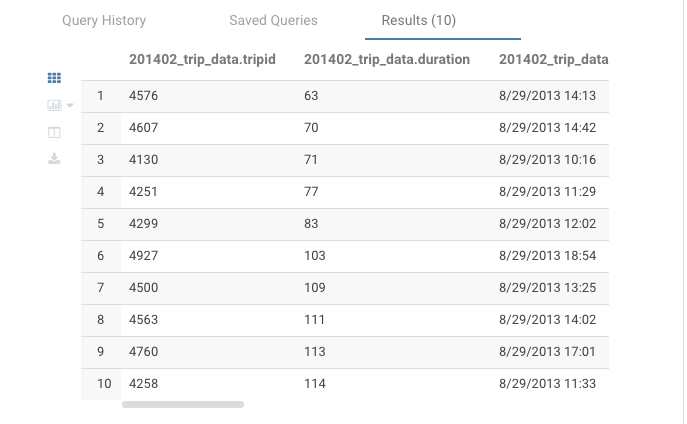
- Enter the following query into the editor window:
-
Click Query at the top of the page and select Editor > Impala to open the Impala SQL editor and then create a query.
-
In the left panel, click the refresh icon and select Perform incremental metadata update to make the new table visible to Impala:
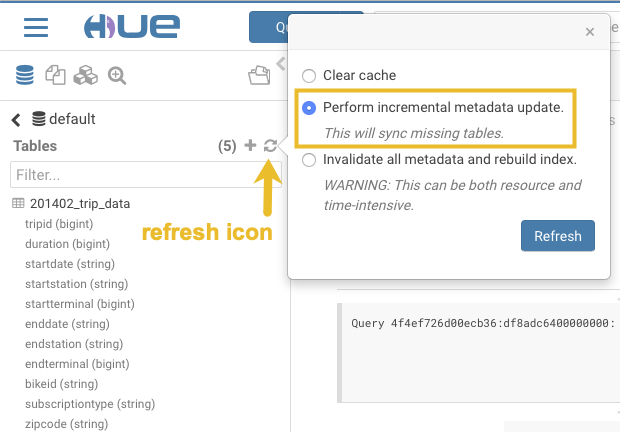
-
Enter the following query into the editor window:
select 'startstation', 'endstation', count(*) as trips from default.'201402_trip_data' group by 'startstation', 'endstation' order by trips desc; -
Click the down arrow just under the execution icon and select Format:
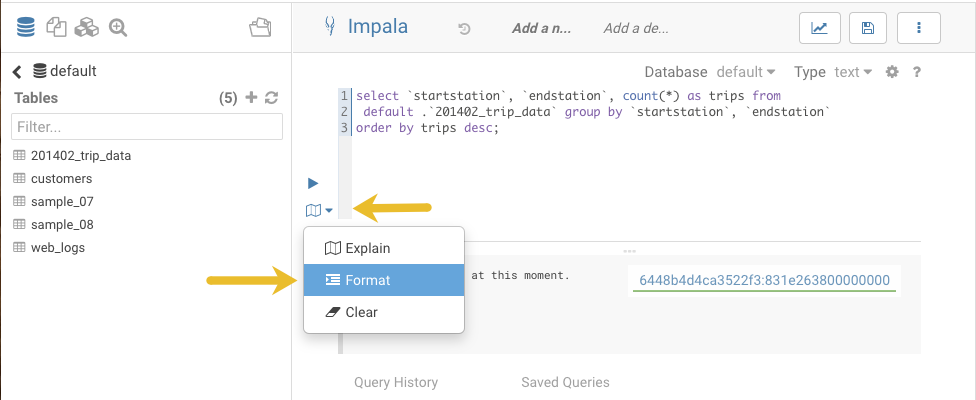
This reformats the query:

- Click the save icon
 , enter a query name, and click
Save.
, enter a query name, and click
Save. - Click the execute icon
 to run the query.
to run the query.
-
-
Create a bar chart that is based on the query results:
-
Click the chart icon
 and then select Bars.
and then select Bars.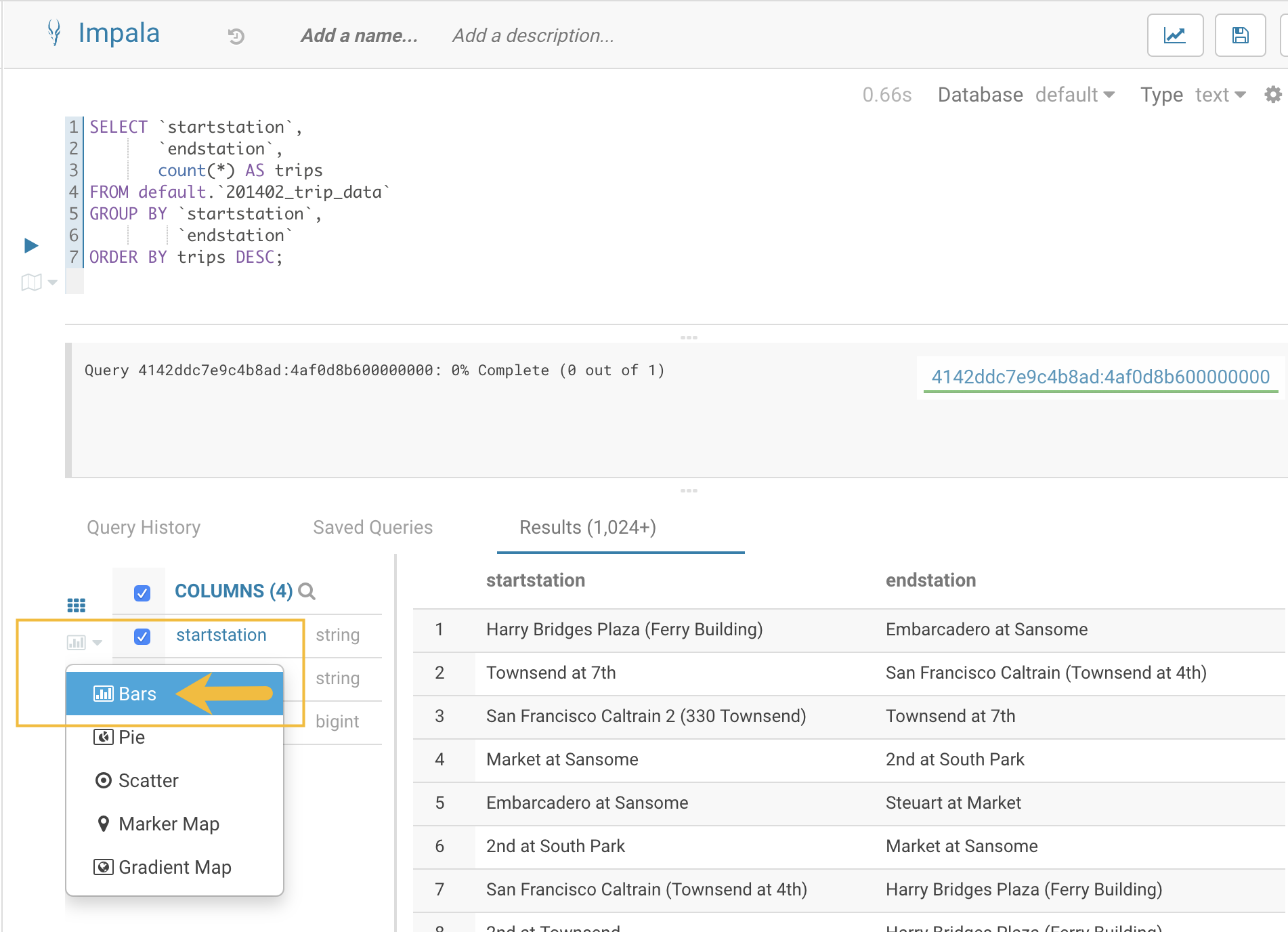
-
Set the bar chart elements as follows:
- X-AXIS = startstation
- Y-AXIS = trips
- LIMIT = 10
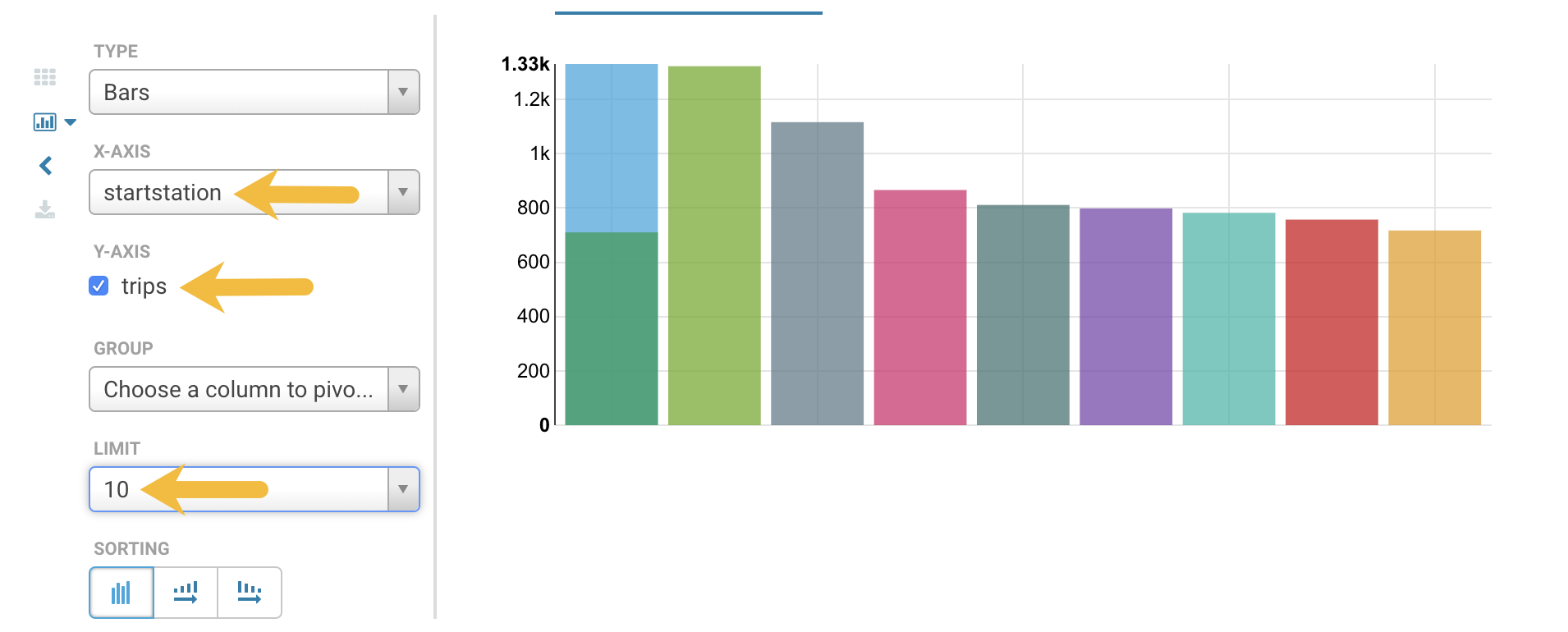
-
-
Create a pie chart by clicking the chart icon again
 and then select
Pie.
and then select
Pie.
-
Download the query results by clicking the download icon
 and selecting in what format you want to
download, copy, or export the results.
and selecting in what format you want to
download, copy, or export the results.


